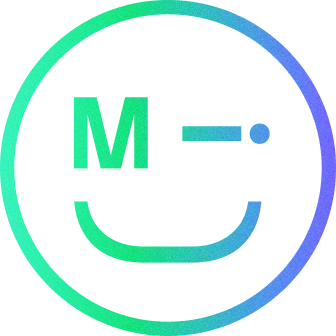The purpose of this blog is to outline what design systems, style guides and UI toolkits are, where they cross over and how they differ. It also details their importance when creating consistent and excellent user experiences across various digital products.
What is a design system?
A design system is a collection of reusable functional elements guided by clear standards that product teams use to create a consistent experience across products. Design systems act as a single source of truth for an entire organisation by using a singular design language to guide the development of products.
A design system contains reusable components, patterns and associated principles that can support growth and future implementations of designs. These patterns are repeatable elements that form the building blocks of an interface, such as typography and buttons.
Similarly, components can be logically grouped together to create larger elements. For example, you may have a navigation bar component made up of numerous elements including menu headers, a logo and a call to action button.The principles then create practices for when and how these should be implemented. As a whole, the design system supports designing at scale in a standardised way.
“A design system acts as the connective tissue that holds together your entire platform.” ― Drew Bridewell, Invision
The core elements of a design system are:
- Component library
- Pattern library
- Brand style guide
- Brand values
- Design principles
- The creation and design of all digital elements that make up the website or digital platform, such as buttons, form fields and navigation along with their various states
- Brand imagery, such a icons and logos
- Content guidelines
- Accessibility guidelines
What are the benefits of a design system?
A unified and consistent branded experience
The standardised implementation of interface elements that are supported by a design system creates a consistent visual language. This allows users to easily identify your products but also provides familiarity, making it easier to learn and recall how to use your product interfaces.
Streamlined design and development process
Having a design system means you have a single source of truth and it facilitates a common design language across teams. This creates alignment between designers, developers, content producers, and other stakeholders, making it easier for them to do their jobs. Ideally, once a decision is made on how something should be designed once or a problem worked through, this should be documented in the design system, reducing the need to repeat work in the future.
Designs can be made more readily at scale
Due to the sets of repeatable elements that make up a design system, designs can be replicated quickly and easily. Teams are able to replicate and use the same UI elements over again, reducing the need to redesign elements and create inconsistencies. Having a well-documented library of components and principles also means that designers and developers can instead focus more of their time towards high-value work.
What is a style guide
A style guide is a smaller and less detailed version of a design system, it can often be a ‘subclass’ in an overarching design system. It exists as a set of branding rules that guide how products that live within an overarching design system should look and feel. Theyoften have slightly different design elements such as typography, colour and iconography.
Although various products within a business may have different style guides, the overall visual language should be consistent and reflect the brand personality that is defined in the overarching design system.
What is a UI toolkit?
A UI toolkit is a collection of UI design components that make up various elements of a pre-existing style guide or design system. They can include elements such as buttons, cards, typography, colour and other visual elements.
The purpose of a UI toolkit is to house reusable UI components in a single place. When users come to build out new pages for an existing website, they can easily access these existing UI ‘building blocks’ to create a new page. It provides a one-stop shop of elements created for people that may not be experienced UX designers to design digital assets that sit coherently within the existing site and reflect the brand DNA.
These ‘building blocks’ could include:
- Header
- Navigation
- Footer
- Article templates
- Information cards
- FAQs
- Buttons
The differences between design systems, style guides and UI toolkits, at a glance
- Component libraries and UI toolkits are part of a design system
- Component libraries only contain components which are used to make up larger elements
- Design systems contain principles and detailed guidelines
- Component libraries do not contain detailed principles around purpose and use of designs
- Design systems provide a single source of truth across all digital touchpoints for a company
- UI toolkits consist of simple-to-use visual ‘building blocks’ to easily create an on-brand website page
Conclusion
Design systems can be composed of component libraries, style guides, UI toolkits, and digital assets that touch numerous digital devices, platforms and interfaces. While it can be challenging to maintain consistency across a fast-paced and dynamic company, design systems can help create responsive products that are aligned across all digital touchpoints that showcase the brand in a consistent, efficient and delightful way.
Book a call
We’d love to discuss how Make it Clear can support your organisation. Book a call here.
